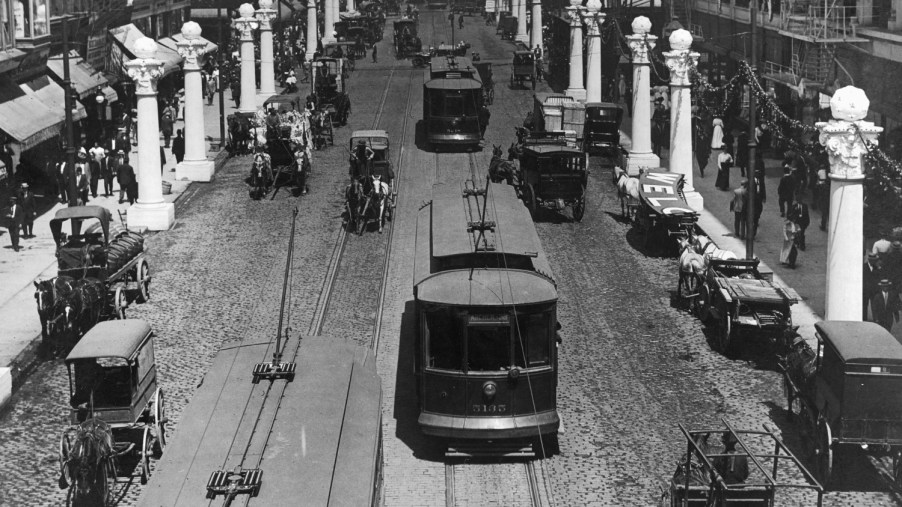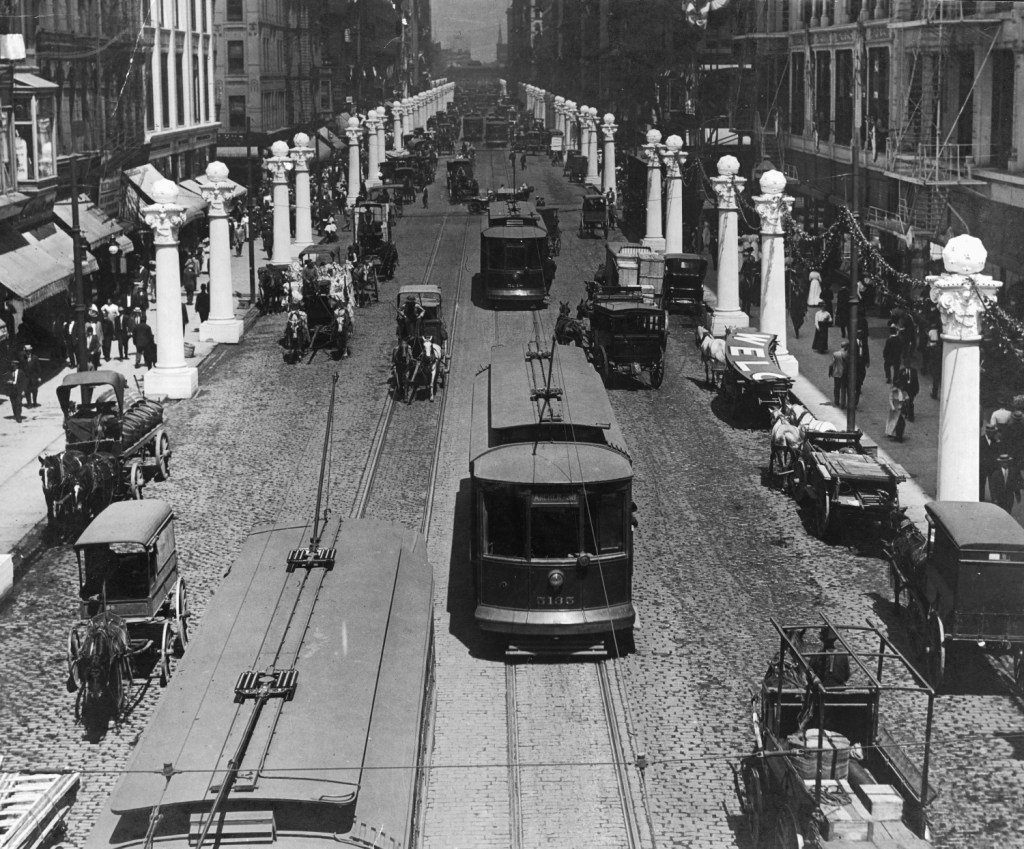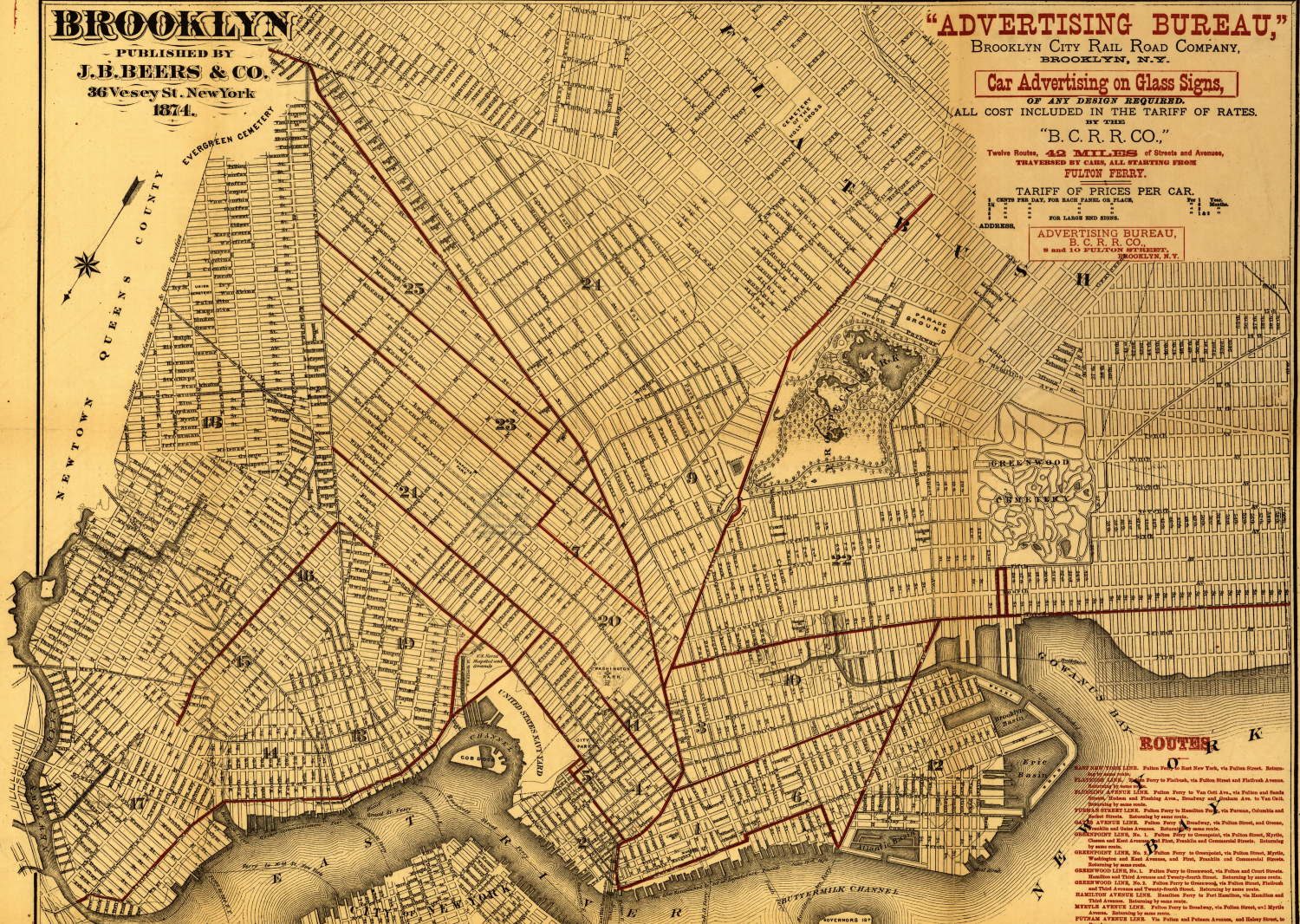
The GM Streetcar Conspiracy: Was GM Responsible for the Demise of America’s Streetcars?
In vintage car safety news, have you heard about how GM was involved with the downfall of the streetcar? Many people know about the streetcars in America, but the story is worth rehashing. One of the biggest companies was called National City Lines, which has links to the GM company of today.
The GM streetcar conspiracy is actually true

The 1800s saw the popularity of animal-drawn streetcars. Electric streetcars replaced these toward the end of the century. By the time the 1920s rolled around, streetcars were a popular mode of public transportation for Americans. Vox reported that there were more than 17,000 miles of streetcar lines connecting major cities across the country. In fact, some towns and suburbs were built around the lines to have convenient locations.
The businessmen who owned these lines were called traction magnates. These traction magnates “consolidated ownership of multiple lines, establishing powerful, oftentimes corrupt monopolies in many cities.” These monopolies became connected with the government to be the sole operator in the area. Such monopolies would later become illegal, which is where GM comes into play again.
After World War I, transportation in America shifted away from streetcars

After World War I, cars become more popular in the country. Many people chose to purchase a vehicle over using public transportation if it could be afforded. And with that change, the roads became increasingly congested. Previously, the streetcars would use a fair share of the road without issue. Once people started driving in individual cars, the traffic piled up. Streetcars could no longer stay on schedule because there was just too much traffic on the roads.
In the contracts signed with the local governments, the streetcar companies were responsible for maintaining the roads. These contracts also had the companies locked into a permanent five-cent fare. After the war, the value of five cents was down, but people refused to accept a higher fare.
Peter Norton, a historian at the University of Virginia and author of Fighting Traffic: The Dawn of the Motor Age in the American City, said no one would support a price increase. “Nobody on these commissions would approve fare increases to cover costs because that would get them in trouble with their constituents,” Norton said. People had little sympathy for the companies after the monopolization of the lines.
A variety of reasons also contributed to the change
Shortly after, the companies started going bankrupt. In some cities, streetcars were still the most popular form of transportation. The exorbitant cost and five-cent fares meant the companies began cutting down on services. This made the streetcar less convenient and sent more people straight for the personal car.
Busses became a better option for some people, and the streetcar companies were in trouble. At that point, one company brought up 46 transit lines. This company, National City Lines, was the holding company of GM. National City Lines began ripping up the streetcar lines and replaced these with busses. The busses and highway networks made for a much easier method of transportation that streetcars couldn’t match.
So in some ways, GM was responsible for the death of the streetcar. However, the companies operating the streetcars were also accountable. Plus, the advent of the personal automobile made mass transit less desirable. GM was accused of monopolizing the industry to benefit itself. In 1949, many of the involved companies were convicted of conspiring to monopolize the sale of buses, fuel, and supplies to NCL companies. This violated the Sherman Antitrust Act of 1890. So while GM didn’t set out to kill off the streetcar, it happened anyway.



